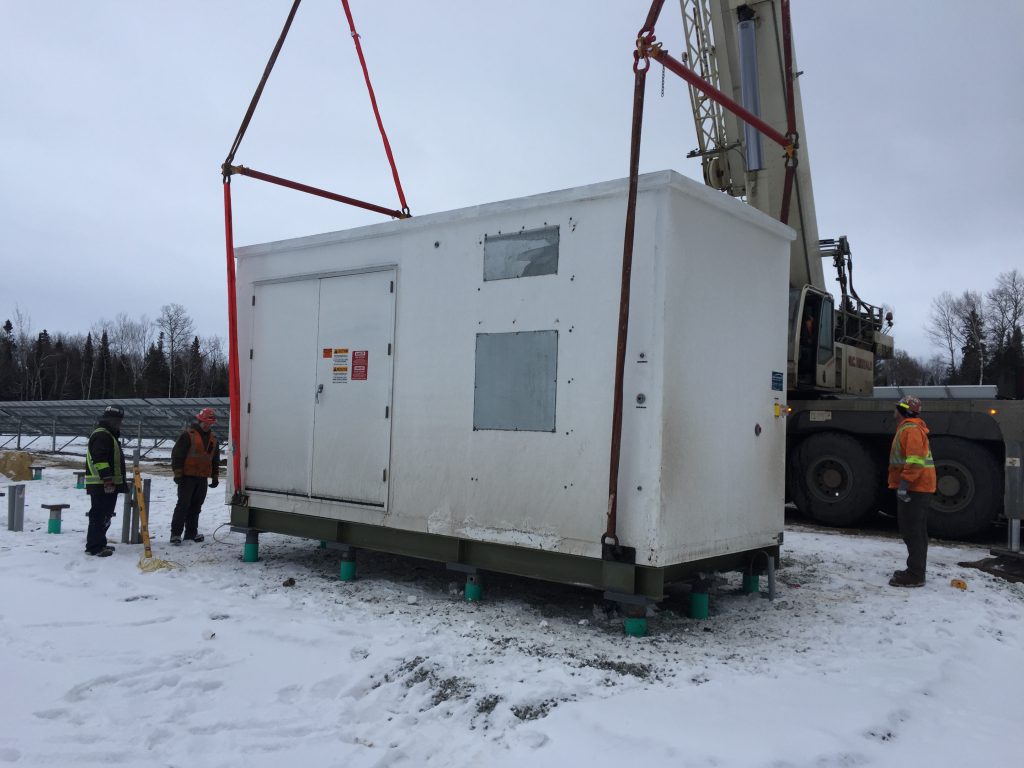What is a Micro Grid?

Project Objectives
The Gull Bay Diesel Offset Micro Grid project will demonstrate the integration of a high-penetration solar photovoltaic system into the existing diesel microgrid on the Kiashke Zaaging Anishinaabek (KZA) / Gull Bay First Nation (GBFN) reserve.
This micro grid (electricity distribution system) will manage loads and distributed energy resources (solar photovoltaic, battery storage, and diesel generators) that can be operated in a controlled and integrated fashion.
Prior to this project, KZA has been fully dependent on diesel generation as the community’s energy source and not connected to the provincial grid.

Kiashke Zaaging Anishinaabek – Gull Bay First Nation’s Giizis Energy Solar Storage Micro Grid Facility Site. August 16, 2019.
Expected Results
This project expects to maximize renewable generation penetration (up to 100% at times) resulting in reduced environmental concerns and greater reduction of diesel fuel consumption. The First Nation will own the system and its revenues, resulting in local economic benefits and strengthened relationships between community and government stakeholders.
Anticipated Diesel Reduction: 130,000 litres/year
As part of the micro grid, solar panels are installed in an area the size of a soccer field, along with a 300 kWh DC battery system with one-hour storage.
A micro grid controller will integrate the clean, renewable energy from the solar panels and the battery storage with the existing diesel distribution system. The controller will balance generation and energy storage to reduce diesel generator use in the community, shutting diesel off entirely at times. This will eliminate more than 300 tonnes of carbon emissions annually.
So, what does this mean?
- 300 tonnes of carbon emissions will be eliminated annually through the micro grid
- 20 years is the expected service life of the micro grid
- The battery system can store energy from the solar panels
- Gull Bay will be harnessing the energy from the sun through over 1000 solar panels
“Chief King and Gull Bay First Nation are using entrepreneurship and ingenuity to be leaders in the fight against climate change – the single greatest issue facing our planet right now. This project is an example for the country of the positive work First Nations are doing right now to address climate change in a way that benefits their citizens, the economy and the environment.” – National Chief, Perry Bellegarde




